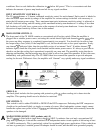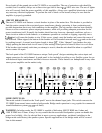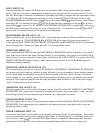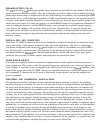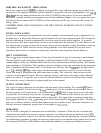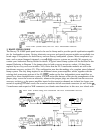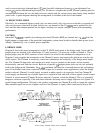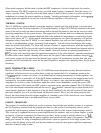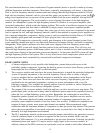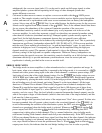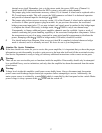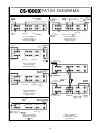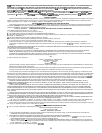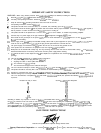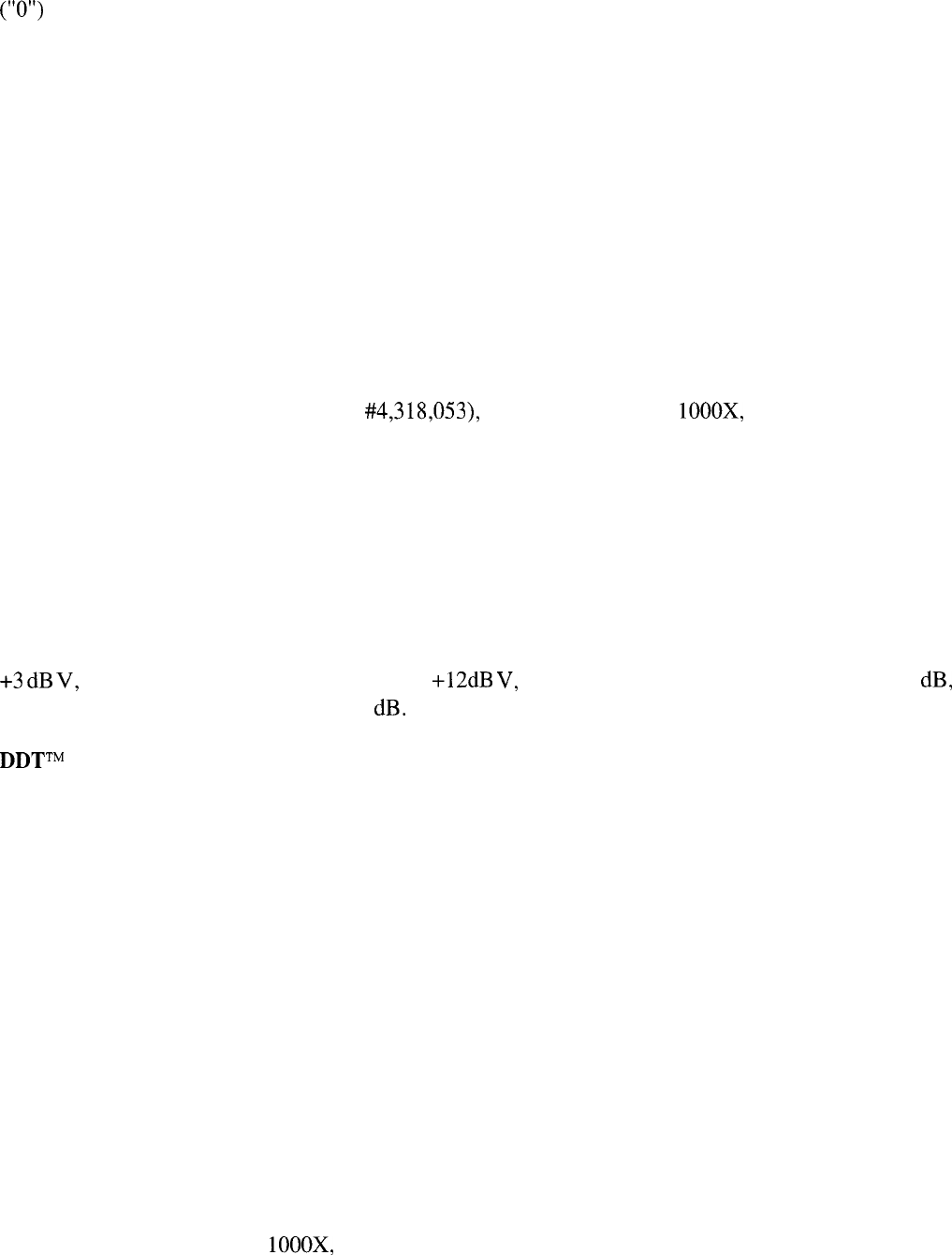
associated loudspeaker components. To help prevent this, whenever the bridge mode is selected, the standby
(“0”)
LED and the LED array itself on Channel B is defeated (off), just as if there was some kind of a fault
condition present on Channel B. This provides a positive indication that the CS 1000X is no longer in the
stereo mode.
INPUT SENSITIVITY CONTROLS
The input sensitivity rating of a power amplifier is the RMS voltage level required at the input to produce
full-rated power into the rated load at the output. This voltage then becomes the level at which the associ-
ated mixer must operate in order to drive the amplifier to full output. The CS 1000X sensitivity controls are
calibrated in decibel volt values rather than RMS voltage (usually listed in typical mixer specs), and as such
are more useful, since most contemporary mixers employ LED arrays to indicate mixer output levels and are
calibrated in decibel volts. Knowing the power amplifier sensitivity rating in decibel volts will allow the
mixer operator to know the status of the power amplifier by noting which LED on the mixer is peaking.
Obviously, the LED labeled the same or closest to the sensitivity rating of the power amplifier will indicate
full power output of the system. Operation at levels above this rating will cause the power amplifier to clip
(produce distortion) unless the associated amplifier has a compressor/limiter to minimize this distortion.
Such a system, called DDT (U.S. Patent #4,318,053), is included in the CS
1000X,
and the advantages
should be obvious. Without DDT, the sound engineer must “ride gain” on the mixer or employ an outboard
limiter in order to prevent amp clipping. With DDT the sound man can relax more and enjoy the “ride.” For
maximum mixer headroom (which in turn really is maximum compression range), the input sensitivity
control should be set at the maximum clockwise setting. This is always the best setting to start with. If,
however, the amplifier is used in a small club, church, or studio application where the full-output capability
of the power amplifier is seldom needed, or there is no need for large amounts of headroom capability, the
full-clockwise setting may not be the wisest choice. Then too, such applications often require low system
noise. In this case, it is possible to reduce the overall system noise at the expense of headroom capability by
increasing the power amplifier sensitivity as in the following example: if, instead of a sensitivity rating of
+3
dB
V,
we adjust the CS 1000X to a rating of
+12dB
V,
overall system noise will be improved by 9
dB,
and the system headroom will decrease 9
dB.
DDTTM
COMPRESSION
The CS 1000X is a compact and powerful amplifier that features a new type of dynamic compression. This
compression system enables the user to maximize the performance of the amplifier/speaker combination.
We have determined through much research that the compression circuitry should prevent the power ampli-
fier from running out of headroom (clipping) and should be as simple to operate as possible to avoid undue
complication for the user. This compression system is activated by our exclusive DDT compression cir-
cuitry, which senses conditions that might overload the amplifier and activates compression when clipping
is imminent. In other words, compression takes place whenever signal conditions exist that prevent the
amplifiers from faithfully reproducing the input signal. In this case, threshold is clipping itself, and no
specific threshold control is provided. This technique effectively utilizes every precious watt available from
the power amplifier. Techniques using external compressors/limiters are usually less effective, severely
limit output power levels and require additional controls, and add complexity to an already complicated
system. The DDT system is an automatic, hands-off approach to the problem of amp clipping. Because of
the dynamics of music and vocals, it is quite common to activate the DDT compression circuitry almost
constantly during a high-level performance, since this is what it was designed to do: i.e., to maximize the
dynamics available from the amplifier within its power-output capabilities regardless of power supply/AC
line voltage variations and load impedance selection. Defeating the DDT compression should be very
carefully considered before one just “flips the switch.” Most loudspeaker systems simply cannot handle the
square wave power of the CS
1000X,
and defeating the DDT system opens up the door for severe clipping!
13



